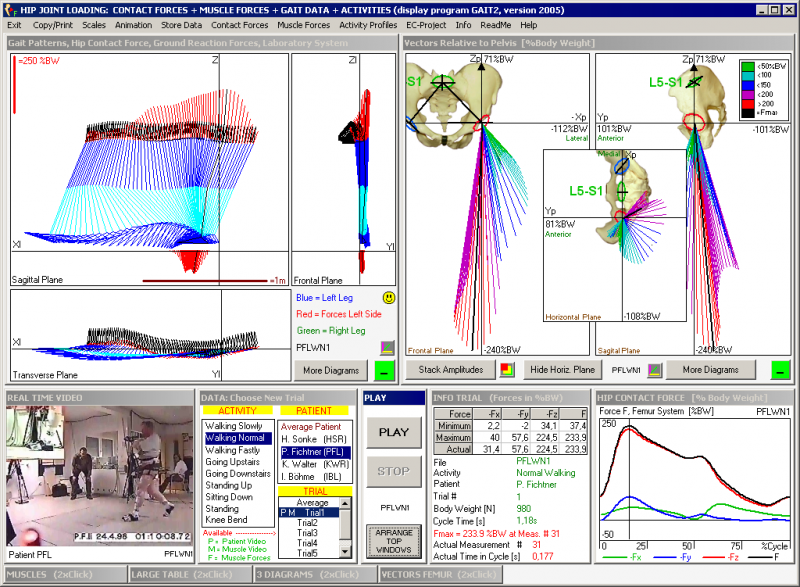Additional Load Data
Numerical data files
For each OrthoLoad video *.wmv, an additional numerical data file *.akf exists. The data in k2l_140607_1_9.akf, for example, belongs to the video k2l_140607_1_9_screen.wmv. The video frame rate is only 25 or 50 Hz and thus the load values seen in the bottom left table of the OrthoLoad video are available at this rate, too. The loads from the instrumented implants were measured at the much higher sampling rate of typically 120 Hz. They are stored in the akf files, which can be opened with any text editor. Small time shifts between the videos and the numerical data can exist. They were compensated for during production of the OrthoLoad videos.
The data in the akf-files are self-explanatory. ‘Marker’ is a signal used to synchronize the telemetric data with external measurements and is of no use to you. The time is given in seconds. Forces or moments are not listed in %BW or %BW*m, as in the OrthoLoad videos (more info). Instead, they are given in measuring units N or Nm in the akf-files. Because the body weight on the measuring day is also stated in the akf-files, you can easily transform the units to %BW or %BW*m. Just divide them by one percent of the body weight [N]. A force of 1000N in a patient with a body weight of 870N (88.7kg), for example, equals the force of 114.9 %BW.10 Nm then corresponds to a moment of 1.15 %BW*m.
If you want, you can directly apply the numerical data, i.e. the time-dependent forces and/or moments in finite element studies or in joint simulators.
You can access each file separately (button ‘Download’ in the frame ‘Additional Data File’).
Data collection ‘HIP98‘
The data collection HIP98 contains the forces acting in the hip joint during the most common activities of daily living. Measurements were taken in 1998 in 4 subjects. In addition to the implant loads and the synchronous videos of the subjects (as in OrthoLoad), this database provides gait analysis data, calculated muscle forces, EMG signals and numbers for the frequencies of the different activities (show abstract of Bergmann et al., 2001 (http://www.ncbi.nlm.nih.gov/pubmed/11410170?dopt=Abstract)).
The forces acting at the acetabulum, i. e. the pelvic side of the hip joint, were additionally determined, using the forces acting relative to the femur plus the belonging gait analysis data. From the results of the individuals, the loads acting in a ‘typical’ or representative subject are also provided (download HIP98 (http://www.orthoload.com/wp-content/files/uploads/hip98.zip)).



